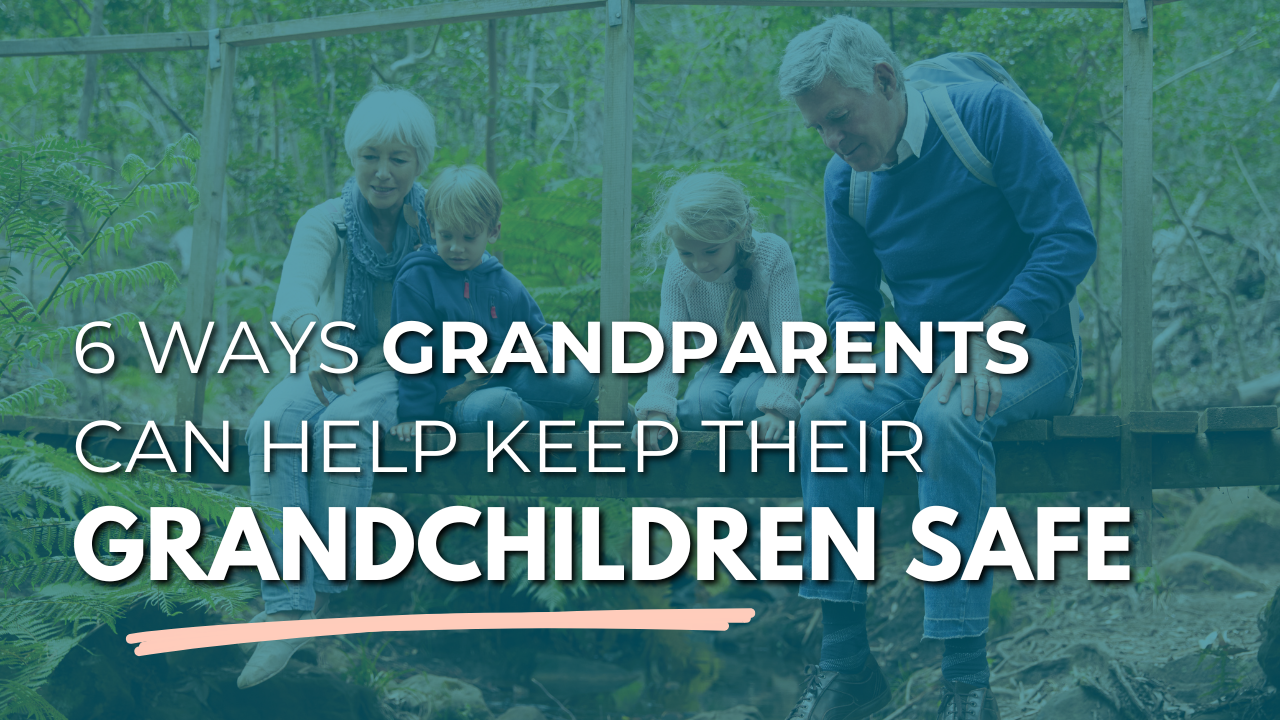6 Ways Grandparents Can Help Keep Their Grandchildren Safe
Nov 14, 2025
Grandparents hold a special kind of magic in a child’s world - they’re the storytellers, the biscuit-bringers, the soft landing when life feels hard. They’ve lived through decades of change and with that comes wisdom, love and a deep desire to protect the little ones who light up their lives.
But the world our kids are growing up in is very different from the one we were raised in. There are new risks, new challenges, and new ways offenders manipulate children and families. The good news? There are also clearer, proven ways to keep kids safe and grandparents play a powerful role in that.
This isn’t about blame or judgement. It’s about teamwork. Because when parents, grandparents and carers all speak the same language of body safety, kids grow up stronger, more confident and far less vulnerable to harm.
Here are six simple, meaningful ways grandparents can help protect their grandkids - and why they matter.
1. Respect Their Boundaries
If a child says “no” to a cuddle or any form of physical touch, that’s okay. It’s not rejection - it’s self-trust.
When adults override a child’s “no,” even with loving intentions, it teaches the wrong lesson: that other people’s feelings matter more than their own comfort and that they should not say 'no' to adults. Respecting their boundaries shows them that their voice matters, their body belongs to them and love doesn’t require compliance.
Try this instead:
“That’s okay, sweetheart. Maybe later. How about a wave or a high-five?”
That small shift teaches consent, confidence and respect - all in one sentence.
2. Avoid Forced Affection
Kids don’t need to hug or kiss someone just because they’re family. Affection should always be an invitation, never an expectation.
When grandparents model this - when they ask instead of insist - they teach children that their body is their choice. It helps them grow into adults who know that love and boundaries can coexist.
Show your love through play, storytelling, or time together. Those moments mean far more than a hug they didn’t want to give.
3. No Secrets, Only Surprises
Offenders rely on secrecy to isolate and control children. The family rule of “no secrets, only surprises” is one of the most protective messages you can teach. Even small things, like asking children to keep a secret about the sweet treats you gave them, can be confusing.
If a child knows they never have to keep a secret, they’re far less likely to be manipulated by someone unsafe.
Try saying:
“In our family, we don’t keep secrets. But we do keep surprises - like birthday presents!”
That one rule teaches honesty, safety and open communication in a way that still feels fun and light.
4. Use the Correct Names for Body Parts
Many of us grew up in families where 'private' parts had nicknames - but that habit can actually increase risk. Research shows kids who know the proper names for their body parts are:
-
More confident talking about their bodies,
-
Less likely to be targeted by offenders, and
-
More likely to be believed if they ever disclose harm.
Using correct language also removes shame and tells kids their whole body is worthy of respect.
If you’re unsure, just use the same words their parents use. Consistency builds confidence.
5. Trust Their Instincts and Believe Them
If your grandchild seems uneasy around someone or doesn’t want to be left alone with them, believe them. Children rarely have the words to explain why something feels wrong - but their instincts are powerful.
Your calm, supportive reaction could be the very thing that keeps them safe.
Even if you’re unsure what’s going on, say something simple like:
“Thank you for telling me. You can always talk to me.”
Trust first. Investigate later and ALWAYS believe kids, even when it doesn't make sense in the moment.
6. Don’t Forget: Digital Safety Matters Too
This one often slips under the radar. Handing your phone or tablet to a grandchild might seem harmless but in seconds, they can click into social media, games, messages or content that’s not safe for them.
A few quick steps can make a big difference:
-
Turn off notifications and pop-ups before handing over your device.
-
Keep your photos, messages, and social apps locked or password-protected.
-
Use kids’ profiles or parental settings for games, YouTube or streaming apps.
-
Stay nearby - even ten seconds of unsupervised scrolling can open doors you didn’t mean to.
It’s not about fear. It’s about staying one step ahead of a world that moves fast - sometimes faster than little fingers can swipe.
The Bottom Line: It Takes a Village
Keeping kids safe isn’t about paranoia - it’s about connection, communication and consistency.
When grandparents model respect, body confidence, digital awareness and open communication, they reinforce everything parents are teaching. Together, we build a network of safety no predator can easily break through.
Every small moment - every boundary respected, every open conversation teaches kids that their voice matters. And that lesson, above all, is what keeps them safest.
Want more tools to guide these conversations?
💬 Explore the Conversations with Kids body safety cards
💪 Join the KidSafe Collective for monthly guides, conversation starters and expert support.


